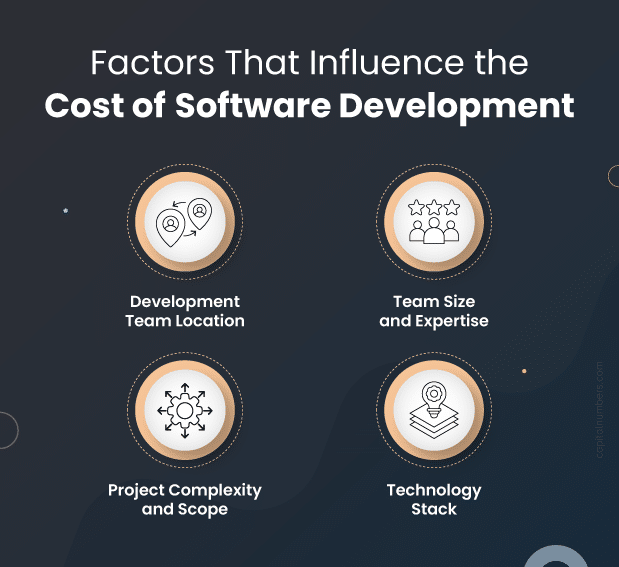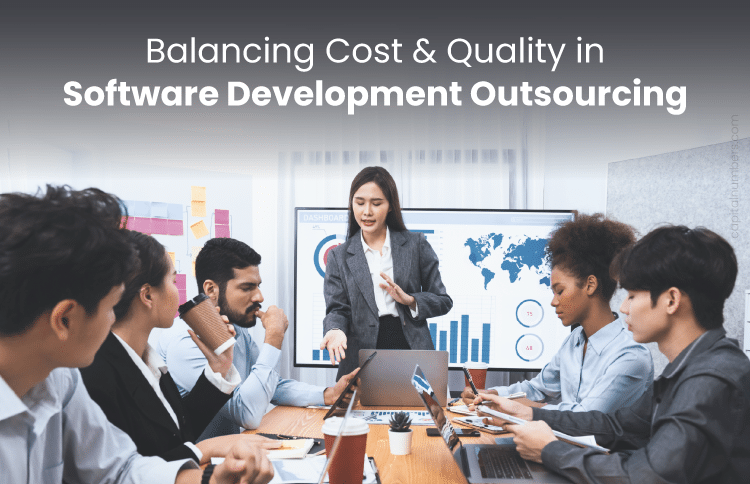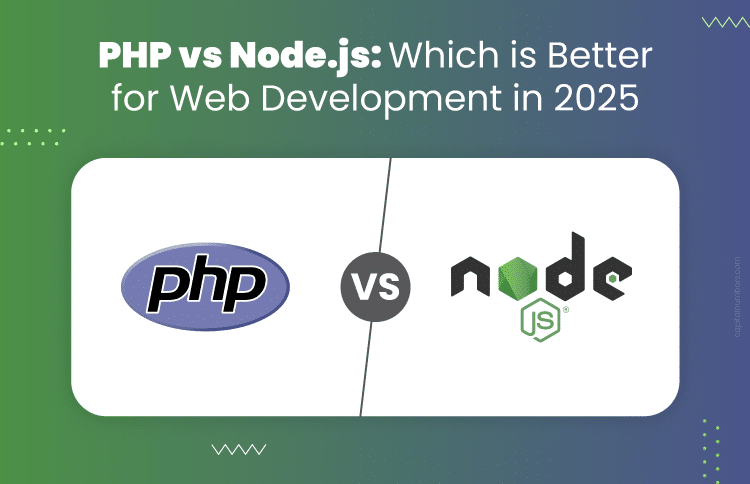Balancing Cost & Quality in Software Development Outsourcing
Table of Contents
Software development outsourcing is a popular strategy for businesses looking to reduce costs, access global talent, and improve efficiency. By partnering with external teams, companies can focus on their core activities while experts handle the technical development. In this blog, we’ll explore the key aspects of outsourcing, including cost factors, quality considerations, and best practices. We’ll also provide insights on how to balance cost and quality, choose the right partners, and manage projects effectively. Whether you’re new to outsourcing or looking to optimize your approach, this guide will help you make informed decisions for your business.
What Is Software Development Outsourcing and Why Is It Important?
Software development outsourcing means hiring an external team or company to handle custom software development tasks instead of using in-house staff. This approach allows businesses to focus on their main activities while outsourcing experts take care of building and maintaining software.
Benefits of Software Development Outsourcing
Outsourcing is important because it offers several benefits. Firstly, it can significantly reduce costs, as businesses don’t need to invest in hiring and training an in-house team. Secondly, it provides access to a global pool of skilled developers, ensuring high-quality work. Lastly, it allows for faster project completion, as outsourced teams often have the necessary expertise and resources readily available.
Current Trends and Market Insights
In recent years, outsourcing has become increasingly popular due to advancements in technology and communication. Businesses are now able to collaborate with teams from around the world more efficiently. Current trends include the rise of offshore outsourcing (hiring teams from distant countries) and the use of agile development methodologies, which improve flexibility and responsiveness. Additionally, there’s a growing emphasis on security and data protection in outsourcing agreements, ensuring that sensitive information is handled safely.
What Factors Influence the Cost of Software Development?

-
Development Team Location (Onshore, Offshore, Nearshore)
The location of your development team can greatly affect costs. Onshore teams are located in the same country as your business, which usually means higher costs due to local wages. Offshore teams are in distant countries where labor is cheaper, reducing costs but possibly creating challenges in communication and time zone differences. Nearshore teams are in neighboring countries, offering a balance between cost savings and easier communication.
-
Team Size and Expertise
The size and expertise of your development team also impact the cost. Larger teams can complete projects faster but will be more expensive due to the number of people involved. Similarly, highly skilled developers with specialized expertise will demand higher salaries. Finding the right balance between team size and skill level is crucial to managing costs effectively.
-
Project Complexity and Scope
The complexity and scope of your project play a significant role in determining costs. Simple projects with straightforward requirements will cost less than complex projects that require advanced features, custom integrations, and extensive testing. Clearly defining the project scope and breaking it into manageable phases can help control costs and avoid budget overruns.
-
Technology Stack
The choice of technology stack—meaning the programming languages, frameworks, and tools used—can influence development costs. Some technologies are more expensive due to licensing fees or the need for specialized skills. Using widely-adopted, open-source technologies can help reduce costs, but it’s essential to choose a technology stack that aligns with your project needs and long-term goals.
You May Also Read: Discovery Phase: The First Step to Successful Software Projects
What Are Cost-Effective Strategies in Software Development Outsourcing?
-
Selecting the Right Outsourcing Model
Choosing the right outsourcing model is key to controlling costs. Here are three common models:
1. Fixed-Price: You pay a set amount for the entire project. This is good for well-defined projects with clear requirements.
2. Time and Materials: You pay for the actual time and resources used. This is flexible for projects where requirements might change.
3. Dedicated Team: You hire a team of developers who work exclusively for you. This is ideal for long-term projects needing ongoing development.
-
Prioritizing Essential Features and Phased Development
Focus on the most important features first. This approach, called phased development, allows you to launch a basic version of your software quickly and add more features later. This helps manage costs and ensures you’re investing in the features that matter most to your business and customers.
-
Utilizing Existing Frameworks and Tools
Using pre-built frameworks and tools can save time and money. Instead of building everything from scratch, leverage existing solutions that meet your needs. This speeds up development and reduces costs while still providing high-quality results.
-
Negotiating Favorable Contract Terms
When negotiating contracts with your outsourcing partner, make sure to agree on terms that protect your interests and control costs. Discuss payment schedules, milestones, and what happens if the project scope changes. Clear, detailed contracts help avoid misunderstandings and unexpected expenses.
What Defines Quality in Software Development?
-
Performance and Functionality
High-quality software performs well and functions as expected. This means the software runs smoothly without errors or crashes, and it effectively does what it’s supposed to do. Reliable performance and robust functionality are essential for user satisfaction and business success.
-
User Experience (UX) and Design
Quality software provides a great user experience (UX) and has an attractive, easy-to-use design. Good UX ensures that users find the software intuitive and enjoyable to use. A clean and appealing design makes the software more engaging and can help retain customers.
-
Scalability and Maintainability
Quality software is scalable and maintainable. Scalability means the software can grow and handle increased loads as your business expands. Maintainability means the software can be easily updated and improved over time without requiring a complete overhaul. This flexibility is crucial for long-term success.
-
Security and Compliance
High-quality software is secure and complies with relevant regulations. Software security ensures that user data is protected from breaches and cyberattacks. Compliance means the software meets industry standards and legal requirements, such as GDPR for data protection. Ensuring security and compliance builds trust with users and avoids legal issues.
How Can You Ensure High-Quality Outcomes?
-
Setting Clear Requirements and Expectations
To achieve high-quality outcomes, start by clearly defining what you want your software to do. Provide detailed requirements and set clear expectations with your development team. This ensures everyone is on the same page and working towards the same goals.
-
Regular Communication and Updates
Maintain regular communication with your development team. Frequent updates and check-ins help catch potential issues early and ensure the project stays on track. Open lines of communication make it easier to address questions or changes promptly.
-
Implementing Best Practices and Standards
Adopt industry best practices and standards in your development process. This includes using proven methodologies, following coding standards, and applying project management techniques. These practices help maintain high quality and consistency throughout the project.
-
Continuous Testing and Quality Assurance
Implement continuous testing and quality assurance (QA) to catch and fix issues as they arise. Regular testing throughout the development process ensures that the software functions correctly and meets the defined requirements. QA helps identify and address bugs, performance issues, and other problems before the software is launched.
You May Also Read: Elevating Software Quality Through Black Box Testing
How to Balance Cost and Quality in Software Development Outsourcing?
-
Aligning Project Goals with Budget Constraints
To balance cost and quality, start by aligning your project goals with your budget. Clearly define what you want to achieve with your software and how much you’re willing to spend. Prioritize the most important features and functions that will deliver the most value to your business. This helps ensure you get the best results without overspending.
-
Evaluating Trade-offs Between Cost and Quality
Understand that there will be trade-offs between cost and quality. Sometimes, cutting costs can lead to lower quality, while investing more can improve the final product. Evaluate these trade-offs carefully. For example, hiring highly skilled developers may be more expensive but can lead to better software. On the other hand, focusing on essential features can help manage costs while still delivering a functional product.
-
Leveraging the MVP (Minimum Viable Product) Approach
Use the MVP (Minimum Viable Product) approach to balance cost and quality. An MVP is a basic version of your software with only the essential features needed to meet user needs. Launching an MVP allows you to enter the market quickly and gather user feedback. This approach helps you avoid spending too much on features that users might not need and allows you to improve the software based on real-world usage. By starting with an MVP, you can manage costs effectively while ensuring high quality.
How to Choose the Right Outsourcing Partner?
-
Assessing the Outsourcing Partner’s Track Record
To choose the right outsourcing partner, start by looking at their track record. Check how long they have been in business and the types of projects they have completed. A good track record shows they have experience and can deliver quality work. Look for any awards or recognitions they may have received as well.
-
Reviewing Case Studies and Client Testimonials
Review case studies and client testimonials to understand the outsourcing partner’s capabilities and reliability. Case studies provide detailed examples of their past projects, showing how they solved problems and achieved results. Client testimonials offer insights into their working relationship and customer satisfaction. Positive feedback from previous clients is a good indicator of their competence and trustworthiness.
-
Conducting Thorough Interviews and Technical Assessments
Conduct thorough interviews and technical assessments to evaluate the outsourcing partner’s skills and expertise. During the interviews, ask about their development process, team structure, and how they handle challenges. Technical assessments can include coding tests or reviewing their previous work to ensure they have the necessary technical skills for your project. This step helps you gauge their proficiency and fit for your specific needs.
How to Ensure Effective Project Management?
-
Establishing Clear Communication Channels
Clear communication is crucial for successful project management. Set up regular meetings and use tools like email, chat, or video calls to keep everyone informed. Make sure all team members know how to reach each other and encourage open, honest communication. This helps prevent misunderstandings and ensures everyone stays on the same page.
-
Setting Up Project Management Tools and Methodologies (Agile, Scrum)
Use project management tools and methodologies to organize and track your project. Tools like Trello, Asana, or Jira can help you manage tasks, deadlines, and resources. Methodologies like Agile and Scrum provide frameworks for breaking the project into smaller, manageable parts and delivering them in short cycles. This approach helps you adapt to changes quickly and keeps the project moving forward smoothly.
-
Monitoring Progress and Performance Metrics
Regularly monitor the progress of your project to ensure it stays on track. Set clear milestones and performance metrics to measure success. Use reports and dashboards to track the team’s progress and identify any issues early. Monitoring helps you stay informed about what’s working well and what needs improvement, allowing you to make adjustments as needed.
How to Manage Risks Effectively?
-
Identifying Potential Risks and Mitigation Strategies
Start by identifying potential risks that could impact your project. These risks might include budget overruns, delays, or technical issues. Once you’ve identified the risks, create strategies to mitigate them. This could involve setting aside extra budget for unexpected costs, creating a detailed project plan to avoid delays, or having backup plans for technical problems. Being proactive about risks helps you prepare and respond effectively.
-
Ensuring Intellectual Property Protection
Protecting your intellectual property (IP) is crucial when outsourcing. Make sure your contracts clearly state that your company owns all the IP created during the project. Include confidentiality agreements to ensure that your ideas and data are kept secure. Working with a reputable outsourcing partner who understands the importance of IP protection will help safeguard your business’s valuable assets.
-
Planning for Contingencies and Handling Disputes
It’s essential to have contingency plans in place in case things don’t go as expected. This might include backup resources, alternative suppliers, or additional time buffers in your project timeline. Additionally, establish clear processes for handling disputes. This could involve setting up regular review meetings, having a third-party mediator, or defining how disagreements will be resolved in your contract. Planning for contingencies and disputes ensures that your project can continue smoothly even if challenges arise.
You May Also Read: How to Manage Your Offshore Software Development Team Efficiently
Conclusion
Effective software development outsourcing requires balancing cost and quality, choosing the right partner, and managing projects and risks efficiently. By understanding the factors influencing costs, implementing cost-effective strategies, and focusing on quality, businesses can achieve high-quality outcomes. Clear communication, robust project management, and proactive risk mitigation are essential for success. By following these guidelines, business owners can make informed decisions, protect their interests, and ensure their software development projects are completed on time and within budget, ultimately driving growth and innovation.
Ready to take your software development to the next level? Partner with us for expert outsourcing solutions that balance cost and quality, ensuring your projects succeed. Contact us today to get started!














